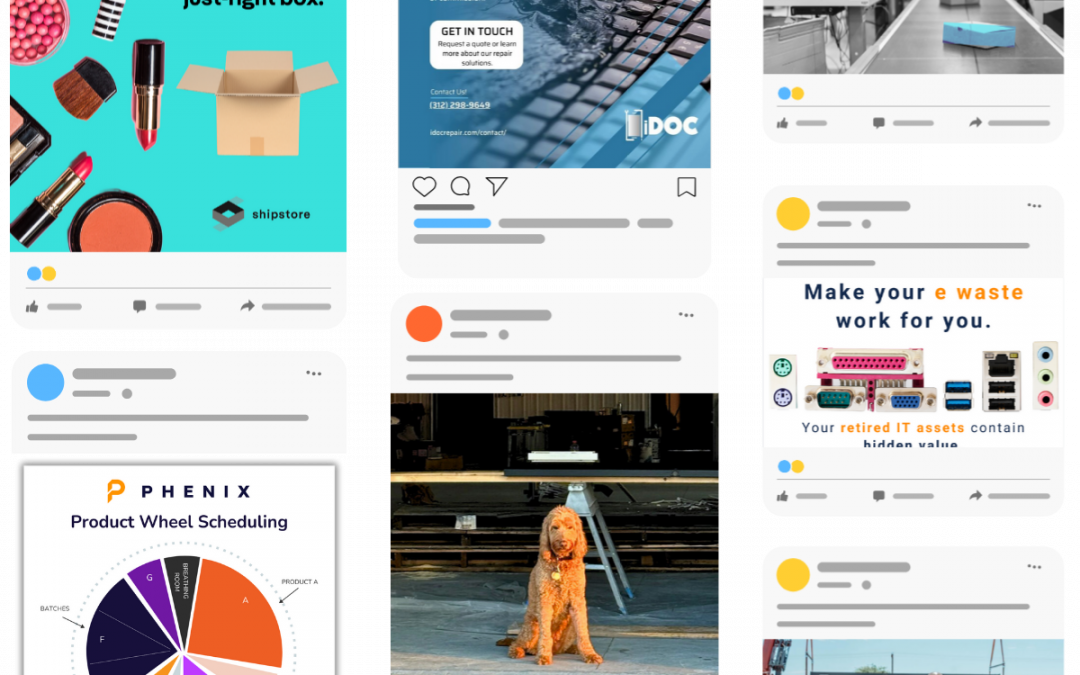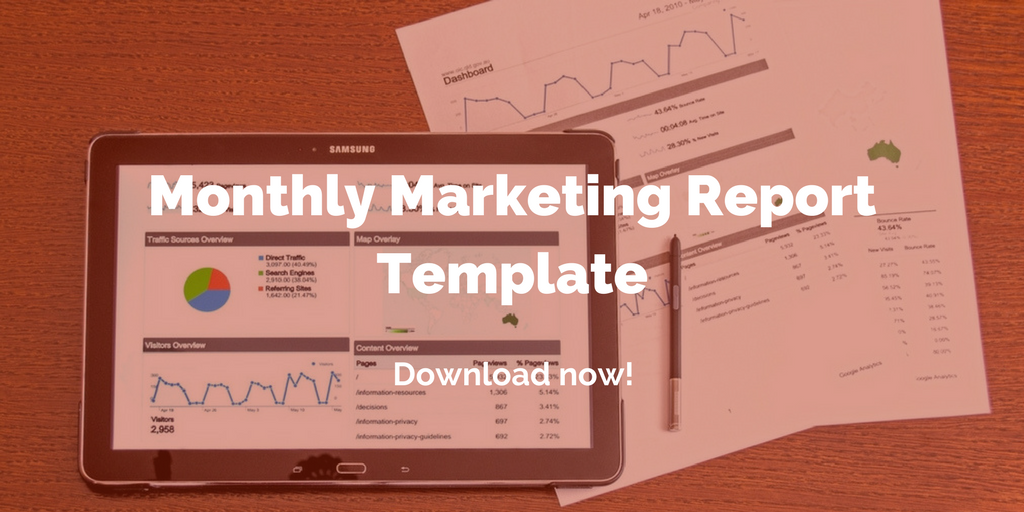

Home
SUPPLY CHAIN MARKETING More leads. More business. Build brand authority and your sales pipeline Grow your supply chain business with a tailored B2B marketing strategy designed by an agency of industry experts. Here's what we do Our services Let’s grow your...
Why Your Company Needs a Social Media Policy
Whether you’re using social marketing or not, chances are your employees are active on social media platforms. Here’s why you need to create a social media policy.
Highlights:
- A social media policy is your business code of conduct, letting people in your organization know how to act on social media.
- Responses to negative comments should be met with patience, respect, and reflect the tone of the brand.
- Employees’ activity on social platforms promotes your business, driving brand awareness and increasing customer loyalty.
Social media can be a powerful tool that helps B2B companies connect with audiences and turn leads into customers. And most platforms give you the ability to track and analyze your performance, increasing your chance of success.
But social media can also have a reverse effect. When used carelessly, it can ruin your brand image, change the public perception of your business, and even lose you customers. Even if your business is not active on social networks, there’s a good chance your employees, and even vendors associated with your brand, are. One misstep by any of these people can have a negative impact on your bottom line.
This is why it’s more important than ever to have a documented social policy that your employees understand and adhere to.
What is a social media policy?
A social media policy is your business code of conduct, letting people in your organization know how to act on social media. It should be a dynamic document that provides guidelines that are easy to use and cover all aspects of social media — including your business and employees’ social pages (personal and professional).
Benefits of a social media policy
Has your company suffered from a social media crisis? Or have one of your employees posted images that don’t match your brand’s image? There are lots of reasons to have a documented social media policy, including:
- Maintaining your brand identity across social platforms
- Quickly responding to a social media crisis
- Straight-forward approach to employees’ personal social profiles
- Encouraging brand ambassadors among employees
4 tips to include in your social media policy
Having a document that outlines your expectations when it comes to social platforms takes the guesswork out of what’s appropriate (and what’s not) for your employees. Your policy should include:
1. Defined roles
Here are Fronetics, we have profiles on several social sites. It’s important to define who takes ownership of each of those accounts and how often they are expected to monitor them. Some companies check social networks daily, others on an as-needed basis.
Comments? Questions? Each engagement with your brand should be responded to in a timely manner. A documented social media policy helps define all these details, including posting frequency, advertising, social listening, and even analytics around how your social channels are performing.
2. Responses to PR issues
When small issues arise on social media — for example, a negative comment or poor customer experience — they can quickly escalate if not handled promptly and effectively. The most important part of responding to these types of situations is to remember that employees are representing their brand first and foremost. Responses to negative comments or unhappy customers should always be met with patience, respect, and reflect the tone of the brand.
An effective way to deal with PR issues and to ensure responses align with your corporate brand is to create a ‘cheat sheet’ of responses to frequent issues or concerns. Employees can check the approved response list to have answers ready to post or know who to contact internally to help de-escalate a situation.
3. Staying within the law
Though this seems fairly obvious, policies should follow state and federal laws. If you’re unsure of these laws, it’s best to seek legal advice to make sure your company is in compliance.
Sprout Social suggests also considering:
- Copyright isn’t a no-brainer, so it’s best to explain how to comply with copyright law on social media, especially when using third-party content.
- Privacy is key. Do all of your employees know how to handle customer information, for instance?
- Confidentiality refers to respecting your organization’s internal information. Whether you have your people sign non-disclosure agreements or not, they should be aware of the ramifications of disclosing information on social media that the organization considers private.
4. Personal account guidelines
Let’s face it: you can’t control everything your employees say on Facebook or any other social channel, but what they post does have an impact on your business. Outline basic guidelines for employees’ personal accounts that – at a minimum – create a level of respect for the company and other employees. These might include:
- No speaking negatively about the business or its staff
- No posting of harassing, hateful, or illegal content
Adidas, for example, has a document that specifically outlines the accepted behavior for employees’ online presence:
“You should also show proper consideration for others’ privacy and for topics that may be considered objectionable or inflammatory (like religion or politics) … we all appreciate respect.”
Final thoughts
A social media policy helps eliminate the “gray area” of your employees’ social profiles. Yes, your employees are active on social media sites. And yes, they are a direct reflection of your brand. By creating a social media policy that provides guidelines and expected behavior, you can feel confident in your employees’ online presence. You may even find that their activity on social platforms promotes your business, driving brand awareness and increasing customer loyalty.
Related posts:

How to Use Paid Advertising in the Buyer’s Journey
Strategically integrating paid advertising in the buyer’s journey can help influence purchases and repeat sales.
Highlights:
- We advocate a primarily inbound strategy, you can boost the reach of your posts by investing in paid digital advertising.
- Your goal is to continue to engage with prospects and educate buyers as to why your product/service is better than your competitors’.
- 60% of consumers believed customer reviews were either trustworthy or very trustworthy — meaning that businesses that can accumulate positive reviews had a good chance of helping a customer make a purchase decision.
Let’s face it: the internet has completely changed the way B2B buyers are researching and making purchases. It’s becoming more crucial than ever to customize content for a potential customer’s journey through your funnel to help convert leads to sales.
The internet has given buyers the ability to research products and services, as well as compare competitors, without ever leaving the house. To keep up, B2B marketers need to align digital marketing efforts with the buyer’s journey to create and distribute content at the right moment.
While we advocate a primarily inbound strategy, you can boost the reach of your posts, ads, and videos by investing in paid digital advertising. And increased reach isn’t the only benefit. New statistics show that PPC visitors are 50% more likely to purchase something than organic visitors.
The key is to create interesting and informative ads and serve it to potential buyers at the right point in their research. Let’s look at how to integrate paid advertising in the buyer’s journey.
3 stages of the buyer’s journey
To stand out from your competitors, marketers need to know what types of paid ads to create and where to distribute them throughout the buyer’s journey. According to Brandon Stauffer, the typical buyer’s journey breaks into three stages:
- Awareness:A buyer figures out they have a problem and begin researching more about that problem. They are looking for resources to validate or better explain what their problem is.
- Consideration:Now the buyer knows the details of their problem. They begin more research to find a solution to their problem.
- Decision:The buyer has done research into solutions and is now comparing those solutions to make a final decision.
Now that you have the three key stages of the buyer’s journey, digital marketers need to pair specific paid ad campaigns with the right stages.
How to use paid advertising in the buyer’s journey by stage
Awareness stage
This is the very top of the sales funnel. All ads at this stage should focus on educating and engaging with prospects. There are two trains of thought when it comes to the awareness stage of paid ad campaigns:
- Create a campaign for prospects who might not know about your brand, products, or services
- Create an ad campaign that focuses on brand awareness and keeping your company at the top of the mind for those prospects that have heard of your brand
For each of these options, creating ads that appeal to your buyer personas will help get them in front of your targeted audiences.
Recommendation: Google search ads, Facebook and Instagram ads, highly visual content including video
Consideration stage
The second stage, consideration, is just that … Buyers are aware of your brand and are considering your products and services. Your goal is to continue to engage with prospects and educate buyers as to why your product/service is better than your competitors’. Remember, this isn’t the time for a hard sale. You want to bring buyers to the table by demonstrating what you can do for them.
Recommendation: Google Display ads, remarketing through Facebook, Instagram, LinkedIn and Twitter
Decision stage
Your prospect is almost ready to commit to a “conversion” but may need that extra push. Ads in this phase should communicate an incentive to get them to complete the conversion.
And don’t forget: people trust people. Customer testimonials can be a powerful tool in the decision stage of the buyer’s journey. HubSpot research found that 60% of consumers believed customer reviews were either trustworthy or very trustworthy — meaning that businesses that can accumulate positive reviews had a good chance of helping a customer make a purchase decision.
Recommendation: Remarketing on Google and social platforms, create visual customer testimonials
Have you tried integrating paid advertising in the buyer’s journey?
Related posts:

4 Digital Marketing Failures (and How to Fix Them)
Digital marketing helps increase brand awareness, convert leads, and drive measurable business value. But that doesn’t mean it’s always easy to execute. Here are 4 digital marketing failures and how to get back on track.
Highlights:
- While digital marketing is extremely effective, proving ROI is often the top challenge for marketers.
- If your content isn’t SEO-friendly, readers may not even have the chance to see what you’re writing because it is so far down in their search results.
- Though it’s often more time consuming than written content, visual content, including infographics and video, are the most popular form of content right now.
B2B buyers want information, and they’re inundated with it. Are you ready for this? There are 2.5 quintillion bytes of data created each day, and that number is only accelerating with the growth of the Internet of Things (IoT). Over the last two years alone, 90% of the data in the world was generated.
Because of at its core it leverages data to target audiences, digital marketing has been a successful solution for marketers. But it’s not that easy.
Here at Fronetics, we’re big believers in analytics. And while digital marketing is extremely effective, proving ROI is often the top challenge for marketers. Without data to back up your efforts, how do you prove your digital marketing strategy is working? And with all those quintillion bytes of data being created every day, how do you stand out from competitors?
The simple answer is using analytics to evaluate your efforts and to determine what is working and what needs to be tweaked. Digital marketing strategies have to be fluid and easily adaptive to change. Companies have to grow and shift with the times, which means that marketing plans have to evolve.
Here are four digital marketing failures, which you can easily identify through analytics, and how to fix them.
4 digital marketing failures (and how to make them right)
1.Lack of strategy
Many marketers understand the power of digital marketing but think they can jump in without a strategy. And not just a strategy that you thought of over coffee, but an actual documented strategy. Why? Because a documented digital marketing strategy will help you work smarter and more effectively.
In fact, according to the Content Marketing Institute, those with a documented content marketing strategy:
- Are far more likely to consider themselves effective at digital marketing
- Feel significantly less challenged with every aspect of digital marketing
- Generally, consider themselves more effective in their use of all digital marketing tactics and social media channels
- Were able to justify spending a higher percentage of their marketing budget on content marketing
Having a fundamental understating of your digital marketing plan and a strategy for executing that plan is crucial for success.
2. No search engine optimization
Google is responsible for 94% of total organic traffic. That’s almost ALL organic traffic. SEO means creating content for your digital assets so they will be prioritized by Google in search queries related to your brand or products. It’s time for digital marketers to learn the basics of Google’s algorithms and understand how the content they’re creating can rank better against the competition.
61% of marketers say improving SEO and growing their organic presence is their top inbound marketing priority. If your content isn’t SEO-friendly, readers may not even have the chance to see what you’re writing because it is so far down in their search results.
3. Quality is lacking
While this seems obvious, it’s worth repeating. If the quality of your content is bad, no one will read it, regardless of what value it offers. The same goes for content about which you find yourself saying, “it works,” or “it’s fine!” If there are 27 million options, who would choose “fine?”
Do an honest evaluation of your digital assets, or have a neutral outside party do so for you. Is it original, informative, and well-written? Make sure that your copy is edited, and that it is free from grammatical errors, spelling mistakes, and awkward phrasing. If you want people to read your content, you should make sure that it’s worth reading.
And don’t shy away from visual content. Though it’s often more time consuming than written content, visual content, including infographics and video, are the most popular form of content right now.
4. Lack of posting consistency
Inconsistently publishing content is one of the primary reasons readers become disengaged with a particular brand. Having consistent, high-quality content helps establish your company as a thought leader in your industry. Even publishing one more blog post a week can significantly boost your readership.
Try experimenting with the amount of content you publish per week. For example, if you currently publish two times a week, try bumping it up to three times for one month. The following month, maybe you try bumping it to four. You’ll find your sweet spot when you’re increasing engagement but are still able to handle the production schedule and it’s not impacting the quality of your content.
What other digital marketing failures have you encountered?
Related posts:



